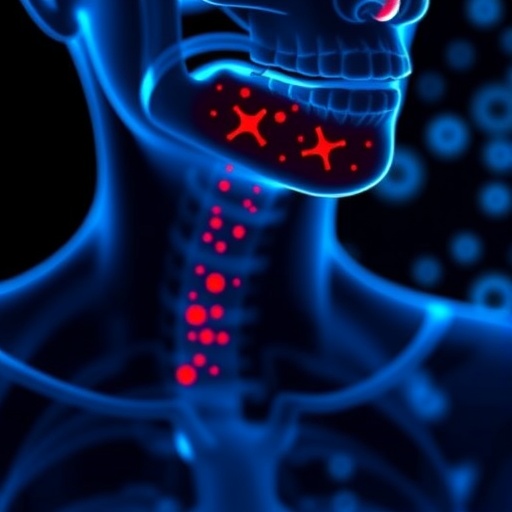Kent State researchers study pandemic’s effects on physical activity and sedentary behavior

Credit: Photo credit: Kent State University
Because of the COVID-19 pandemic, most universities across the United States transitioned from face-to-face classes to remote learning, closed campuses and sent students home this past spring. Such changes, coupled with social distancing guidelines, have altered social interactions and limited our access to fitness facilities, parks and gymnasiums. This is concerning as positive social interaction and access to exercise facilities both promote physical activity. Recently, a group of Kent State University researchers sought to examine the impact of these pandemic-related changes upon physical activity and sedentary behavior, specifically sitting, across the university population.
Kent State’s College of Education, Health and Human Services professors Jacob Barkley, Ph.D., Andrew Lepp, Ph.D., and Ellen Glickman, Ph.D., along with current and former Kent State doctoral students Greg Farnell, Ph.D., Jake Beiting, Ryan Wiet and Bryan Dowdell, Ph.D., assessed the impact of the COVID-19 pandemic on physical activity and sedentary behavior. More than 400 college students, faculty, staff and administrators reported their typical physical activity and sedentary behavior before the COVID-19 pandemic and after the transition to remote learning and the closure of campus.
In this before-and-after comparison, participants reported nearly eight hours more sitting per week after transitioning from face-to-face classes to remote learning. Changes in physical activity were not so straightforward. Those participants who were not highly active before the pandemic actually increased physical activity after the closure of campus and the transition to remote learning, while participants who were highly active before the pandemic experienced a decrease in overall physical during the pandemic.
“It appears that the participants who were most physically active before the pandemic may have been the most negatively affected,” Barkley said. “This makes sense as these active individuals are more likely to utilize the fitness facilities that were closed when the pandemic hit. However, the increases in physical activity in participants who were less active before the pandemic were surprising. Perhaps the elimination of a daily commute left them with more time for physical activity. Or perhaps, they started walking just to get out of the house for a bit. Independent of the changes in physical activity, the sample-wide increase in sitting by over an hour per day is concerning as excess sitting is associated with a variety of negative health outcomes, such as cardiovascular disease, diabetes and even a greater risk of dying earlier.”
The authors suggest that while many, like those on university campuses, experienced and may continue to experience challenging, pandemic-related changes to their daily routines, it is important that we all work to maintain positive health behaviors despite these challenges. The Kent State researchers recommend the following:
- Try to minimize sitting for extended periods of time, and when possible, add in some exercise at home or outside.
- For those who are still working or taking classes remotely, try to incorporate a standing desk into your routine and/or plan breaks where you get up and move away from your computer. During those breaks, try to do some light activity, like taking a walk.
- Breaking up your sedentary activity by adding some physical activity will not only benefit your physical health; it can improve cognition, productivity and reduce stress.
“There are likely lots of us that could use some stress relief right now,” Barkley said. “Getting up and moving can provide just that.”
###
The Kent State study, titled “The Acute Effects of the COVID-19 Pandemic on Physical Activity and Sedentary Behavior in University Students and Employees,” is published in the International Journal of Exercise Science.
For more information about Kent State’s College of Education, Health and Human Services, visit http://www.
Photo Captions:
Photo of Jacob Barkley:
Jacob Barkley, Ph.D., professor in Kent State University’s College of Education, Health and Human Services, co-authored a study examining COVID-19’s effects on physical activity and sedentary behavior in university students and employees.
Photo of Andrew Lepp:
Andrew Lepp, Ph.D., professor in Kent State University’s College of Education, Health and Human Services, co-authored a study examining COVID-19’s effects on physical activity and sedentary behavior in university students and employees.
Media Contacts:
Jacob Barkley
[email protected]
330-672-0209
Andrew Lepp
[email protected]
330-672-0218
Emily Vincent
[email protected]
330-672-8595
Media Contact
Jacob Barkley
[email protected]
Original Source
https:/




